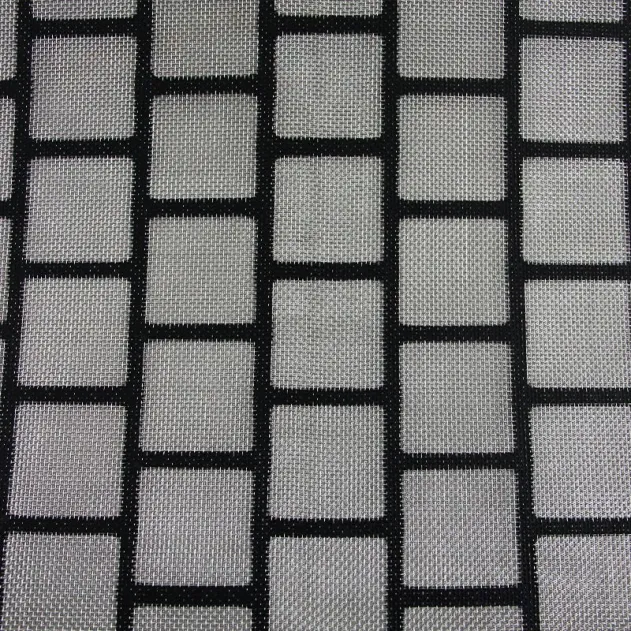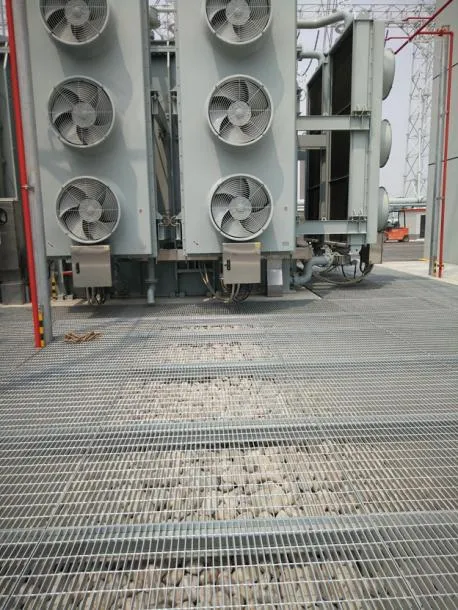- Industrial zone, South of Anping Town, Hengshui, Hebei, China.
- sales@hfpetromesh.com
- +86-18931809706
 Afrikaans
Afrikaans  Albanian
Albanian  Amharic
Amharic  Arabic
Arabic  Armenian
Armenian  Azerbaijani
Azerbaijani  Basque
Basque  Belarusian
Belarusian  Bengali
Bengali  Bosnian
Bosnian  Bulgarian
Bulgarian  Catalan
Catalan  Cebuano
Cebuano  Corsican
Corsican  Croatian
Croatian  Czech
Czech  Danish
Danish  Dutch
Dutch  English
English  Esperanto
Esperanto  Estonian
Estonian  Finnish
Finnish  French
French  Frisian
Frisian  Galician
Galician  Georgian
Georgian  German
German  Greek
Greek  Gujarati
Gujarati  Haitian Creole
Haitian Creole  hausa
hausa  hawaiian
hawaiian  Hebrew
Hebrew  Hindi
Hindi  Miao
Miao  Hungarian
Hungarian  Icelandic
Icelandic  igbo
igbo  Indonesian
Indonesian  irish
irish  Italian
Italian  Japanese
Japanese  Javanese
Javanese  Kannada
Kannada  kazakh
kazakh  Khmer
Khmer  Rwandese
Rwandese  Korean
Korean  Kurdish
Kurdish  Kyrgyz
Kyrgyz  Lao
Lao  Latin
Latin  Latvian
Latvian  Lithuanian
Lithuanian  Luxembourgish
Luxembourgish  Macedonian
Macedonian  Malgashi
Malgashi  Malay
Malay  Malayalam
Malayalam  Maltese
Maltese  Maori
Maori  Marathi
Marathi  Mongolian
Mongolian  Myanmar
Myanmar  Nepali
Nepali  Norwegian
Norwegian  Norwegian
Norwegian  Occitan
Occitan  Pashto
Pashto  Persian
Persian  Polish
Polish  Portuguese
Portuguese  Punjabi
Punjabi  Romanian
Romanian  Russian
Russian  Samoan
Samoan  Scottish Gaelic
Scottish Gaelic  Serbian
Serbian  Sesotho
Sesotho  Shona
Shona  Sindhi
Sindhi  Sinhala
Sinhala  Slovak
Slovak  Slovenian
Slovenian  Somali
Somali  Spanish
Spanish  Sundanese
Sundanese  Swahili
Swahili  Swedish
Swedish  Tagalog
Tagalog  Tajik
Tajik  Tamil
Tamil  Tatar
Tatar  Telugu
Telugu  Thai
Thai  Turkish
Turkish  Turkmen
Turkmen  Ukrainian
Ukrainian  Urdu
Urdu  Uighur
Uighur  Uzbek
Uzbek  Vietnamese
Vietnamese  Welsh
Welsh  Bantu
Bantu  Yiddish
Yiddish  Yoruba
Yoruba  Zulu
Zulu
- Afrikaans
- Albanian
- Amharic
- Arabic
- Armenian
- Azerbaijani
- Basque
- Belarusian
- Bengali
- Bosnian
- Bulgarian
- Catalan
- Cebuano
- Corsican
- Croatian
- Czech
- Danish
- Dutch
- English
- Esperanto
- Estonian
- Finnish
- French
- Frisian
- Galician
- Georgian
- German
- Greek
- Gujarati
- Haitian Creole
- hausa
- hawaiian
- Hebrew
- Hindi
- Miao
- Hungarian
- Icelandic
- igbo
- Indonesian
- irish
- Italian
- Japanese
- Javanese
- Kannada
- kazakh
- Khmer
- Rwandese
- Korean
- Kurdish
- Kyrgyz
- Lao
- Latin
- Latvian
- Lithuanian
- Luxembourgish
- Macedonian
- Malgashi
- Malay
- Malayalam
- Maltese
- Maori
- Marathi
- Mongolian
- Myanmar
- Nepali
- Norwegian
- Norwegian
- Occitan
- Pashto
- Persian
- Polish
- Portuguese
- Punjabi
- Romanian
- Russian
- Samoan
- Scottish Gaelic
- Serbian
- Sesotho
- Shona
- Sindhi
- Sinhala
- Slovak
- Slovenian
- Somali
- Spanish
- Sundanese
- Swahili
- Swedish
- Tagalog
- Tajik
- Tamil
- Tatar
- Telugu
- Thai
- Turkish
- Turkmen
- Ukrainian
- Urdu
- Uighur
- Uzbek
- Vietnamese
- Welsh
- Bantu
- Yiddish
- Yoruba
- Zulu
Jan . 17, 2025 03:38
Back to list
heavy duty steel grating price
The global landscape for steel products, particularly steel grating, has become increasingly vital for various industrial and commercial applications. Steel grating is widely used due to its durability, strength, and versatility, becoming a go-to material for engineers and builders alike. As market demands evolve, accurately understanding the price per square meter for steel grating can offer significant advantages for businesses seeking to optimize costs and project outcomes.
Geographical market conditions also play a crucial role in price determination. Markets in economically advanced regions might reflect higher prices due to stringent regulatory requirements, while emerging markets might offer competitive pricing due to lower labor and production costs. Conducting a comparative analysis not only broadens perspective on procurements but also illuminates alternative sourcing options that yield cost benefits. Incorporating real-world insights from industry experts can significantly enhance decision-making processes. Conversations with seasoned engineers, procurement managers, and supply chain analysts reveal the pragmatics of steel grating use and procurement. Many experts recommend securing long-term supplier agreements to hedge against price volatility and ensure a consistent supply of quality materials. Transparency and credibility are critical when discussing pricing strategies for steel grating. Ensuring accurate dissemination of information aids in establishing trustworthiness with stakeholders. Companies should strive to maintain clarity and integrity when communicating price-related information, fostering a transparent dialogue with clients and partners. In conclusion, while the price per square meter of steel grating is subject to a complex interplay of factors, understanding these elements equips businesses with the knowledge needed to make informed procurement decisions. Leveraging expert advice, adopting flexible sourcing strategies, and prioritizing quality standards will collectively enable companies to exploit market opportunities amidst price fluctuations, driving both efficiency and project success.


Geographical market conditions also play a crucial role in price determination. Markets in economically advanced regions might reflect higher prices due to stringent regulatory requirements, while emerging markets might offer competitive pricing due to lower labor and production costs. Conducting a comparative analysis not only broadens perspective on procurements but also illuminates alternative sourcing options that yield cost benefits. Incorporating real-world insights from industry experts can significantly enhance decision-making processes. Conversations with seasoned engineers, procurement managers, and supply chain analysts reveal the pragmatics of steel grating use and procurement. Many experts recommend securing long-term supplier agreements to hedge against price volatility and ensure a consistent supply of quality materials. Transparency and credibility are critical when discussing pricing strategies for steel grating. Ensuring accurate dissemination of information aids in establishing trustworthiness with stakeholders. Companies should strive to maintain clarity and integrity when communicating price-related information, fostering a transparent dialogue with clients and partners. In conclusion, while the price per square meter of steel grating is subject to a complex interplay of factors, understanding these elements equips businesses with the knowledge needed to make informed procurement decisions. Leveraging expert advice, adopting flexible sourcing strategies, and prioritizing quality standards will collectively enable companies to exploit market opportunities amidst price fluctuations, driving both efficiency and project success.
Share
Prev:
Latest news
-
Welded Steel Bar Grating: The Rugged Industrial Flooring Solution Built for Load and LongevityNewsJun.24,2025
-
Steel Walkway Grating: Reliable, Resilient, and Built for Every StepNewsJun.24,2025
-
Shale Shaker Screen for Sale: Optimize Drilling Efficiency with Precision Screening PowerNewsJun.24,2025
-
Shaker Screen for Sale: Elevate Your Drilling Efficiency with Durable Separation SolutionsNewsJun.24,2025
-
Press Locked Steel Grating: Industrial Strength with Precision Fit for Heavy-Duty ApplicationsNewsJun.24,2025
-
Perimeter Safety Netting: The Critical Safety Upgrade for Every HelipadNewsJun.24,2025